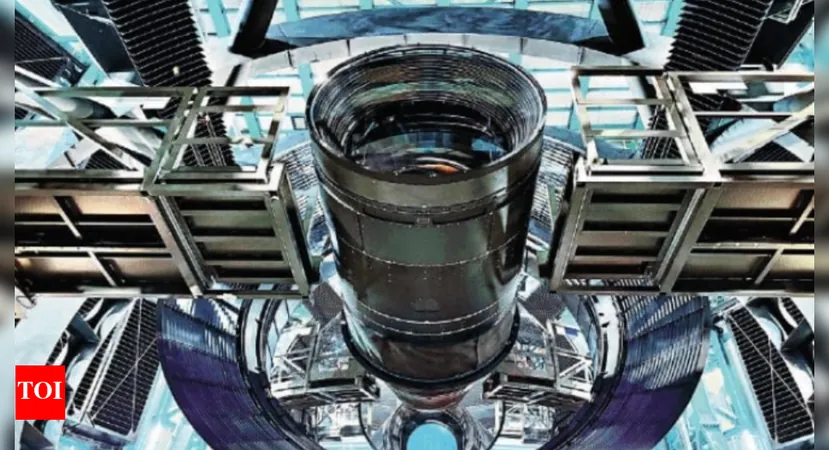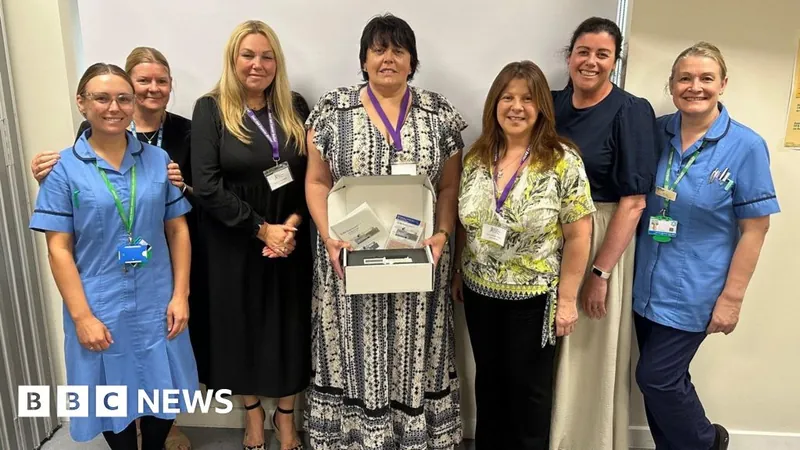
Discoveries from the Webb Telescope: Tiny Galaxies Igniting the Early Universe
2025-06-14
Author: Michael
A groundbreaking revelation from NASA's Webb Space Telescope has unveiled small galaxies that played a monumental role in illuminating the early universe. "These tiny galaxies are remarkable when it comes to emitting ultraviolet light," stated Isak Wold, an assistant research scientist at Catholic University of America and NASA's Goddard Space Flight Center. "Our analysis shows we’ve achieved a sensitivity ten times greater than earlier studies, revealing that these galaxies were not only numerous but also powerful enough to kickstart this cosmic transformation."
Wold shared these significant findings during the 246th American Astronomical Society meeting held in Anchorage, Alaska. Utilizing Webb's advanced imaging capabilities, researchers combined existing data from the NIRCam (Near-Infrared Camera) with new insights from the NIRSpec (Near-Infrared Spectrograph) to identify these stellar powerhouses.
The discovery was made by Wold and his colleagues, Sangeeta Malhotra and James Rhoads, while analyzing images from the UNCOVER program led by Rachel Bezanson at the University of Pittsburgh. Their study focused on mapping the Abell 2744 galaxy cluster—dubbed Pandora's cluster—located approximately 4 billion light-years away in the southern constellation of Sculptor.
In the universe's infancy, it was shrouded in a dense fog of neutral hydrogen. Over time, this gas was ionized, ushering in a phenomenon known as reionization. Astronomers have long debated what triggered this pivotal change—large galaxies, small galaxies, or supermassive black holes. One of Webb's key missions is to uncover the specifics of this major cosmic evolution.
Recent research hints that small galaxies with intense star formation, though rare today, were actually plentiful about 800 million years after the Big Bang. This period, known to astronomers as redshift 7, is when reionization was significantly advancing.
The research team focused on identifying small galaxies at that historic juncture, particularly those exhibiting extreme star formation or 'starbursts'. Wold emphasized how these galaxies, due to their low mass, gather less neutral hydrogen, allowing ultraviolet light to escape more easily.
They sought out sources of a particular wavelength that indicates high-energy processes, specifically a green line emitted by oxygen atoms that have lost two electrons. This green glow, originally visible light, was stretched into the infrared as it journeyed through the expanding universe until it reached Webb’s instruments.
In total, they identified 83 small starburst galaxies from the universe’s youth—just 800 million years old. Further analysis was conducted on 20 of these galaxies using NIRSpec.
Malhotra noted, "These galaxies are so small that to match the stellar mass of our Milky Way, you'd need anywhere from 2,000 to 200,000 of them. Yet, thanks to our selection techniques and gravitational lensing, we can detect them. This is revolutionary!"
If these low-mass starburst galaxies release ionizing ultraviolet light akin to similar modern galaxies, they could very well account for all the ultraviolet light necessary to ionize the universe's neutral hydrogen. What a cosmic adventure!
The James Webb Space Telescope stands as the forefront of space science, uncovering mysteries within our solar system and beyond. It’s not only peering into distant worlds around other stars but is also a vital tool in unraveling the vast enigmas regarding the origins and structures of our universe. Webb is a collaborative effort led by NASA, in partnership with the European Space Agency (ESA) and the Canadian Space Agency (CSA).









 Brasil (PT)
Brasil (PT)
 Canada (EN)
Canada (EN)
 Chile (ES)
Chile (ES)
 Česko (CS)
Česko (CS)
 대한민국 (KO)
대한민국 (KO)
 España (ES)
España (ES)
 France (FR)
France (FR)
 Hong Kong (EN)
Hong Kong (EN)
 Italia (IT)
Italia (IT)
 日本 (JA)
日本 (JA)
 Magyarország (HU)
Magyarország (HU)
 Norge (NO)
Norge (NO)
 Polska (PL)
Polska (PL)
 Schweiz (DE)
Schweiz (DE)
 Singapore (EN)
Singapore (EN)
 Sverige (SV)
Sverige (SV)
 Suomi (FI)
Suomi (FI)
 Türkiye (TR)
Türkiye (TR)
 الإمارات العربية المتحدة (AR)
الإمارات العربية المتحدة (AR)